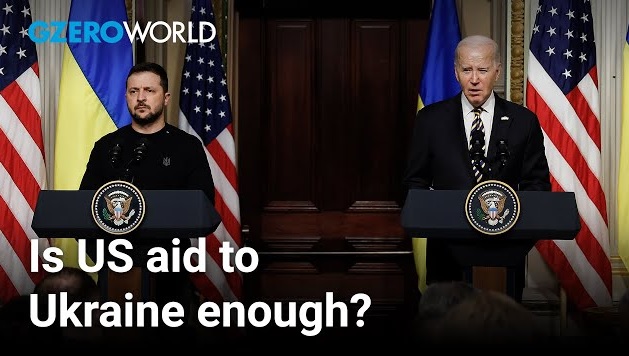
Pro-Ukraine aid lawmakers have learned their lesson. As the allotment for new weapons in the $61 billion Ukraine aid package is set to drain out by January, machinations are in play to get more to Kyiv without the kind of political debate that overtook Congress this year, writes ‘The American Conservative’.
One might be wondering how Ukraine blew through almost $61 billion from April. But the whole idea that Washington was giving the Zelensky government that much was wrong to begin with.
According to Mark Cancian, probably the most astute chronicler of current arms spending by the federal government today, most of the $61 billion — passed by Congress in April after months of wrangling and opposition by Republicans — is being spent in the United States, not Ukraine.
In his May paper with co-writer Chris H. Park for the Center for Strategic and International Studies (CSIS), Cancian wrote:
Despite images of “pallets of cash” being sent to Ukraine, about 72 percent of this money overall and 86 percent of the military aid will be spent in the United States. The reason for this high percentage is that weapons going to Ukraine are produced in U.S. factories, payments to U.S. service members are mostly spent in the United States, and even some piece of the humanitarian aid is spent in the United States. The major element of funding going to Ukraine is the economic support to the Ukrainian government, which the World Bank handles.
According to the CSIS analysts, of the $25 billion for direct military weapons assistance to Ukraine in the package, only $13.4 billion was to replenish U.S. stockpiles and send new weapons under the Presidential Drawdown Authority (PDA). In fact, only about half of that was earmarked for weapons to be sent to Ukraine; the rest was to bolster DoD stockpiles.
The rest of the $25 billion was for grants and loans for Ukraine to purchase weapons under the Foreign Military Financing program, and “enhancing the (U.S.) defense industrial base to increase production capabilities and develop more advanced weapons and munitions,” according to Cancian and Park.
The rest of the $61 billion — about $36 billion — allows the U.S. to buy weapons for Ukraine on the global market when it can, gives money to Ukraine to enter into contracts with U.S. arms manufacturers, and funds the necessary training of Ukrainians on new weapons systems. The rest is very non-Ukraine military related, including economic and humanitarian aid for Kyiv, funding for the heightened U.S. military presence in Europe, and U.S. research and development.
Moreover, anything Ukraine contracts directly with U.S. defense companies could take months if not years to fulfill. Good for the arms industry, not so much for Ukrainians on the front lines.
J.D. Vance (R-OH), who is Trump’s vice presidential running mate, has made it clear he would not support further unconditional aid. He voted against the April package and would still play an active role after the November election.
“I do not think that it is in America's interest to continue to fund an effectively never-ending war in Ukraine,” Vance said during a speech in May, adding “we've done more than our fair share.”
read more in our Telegram-channel https://t.me/The_International_Affairs

 11:10 13.09.2024 •
11:10 13.09.2024 •






















